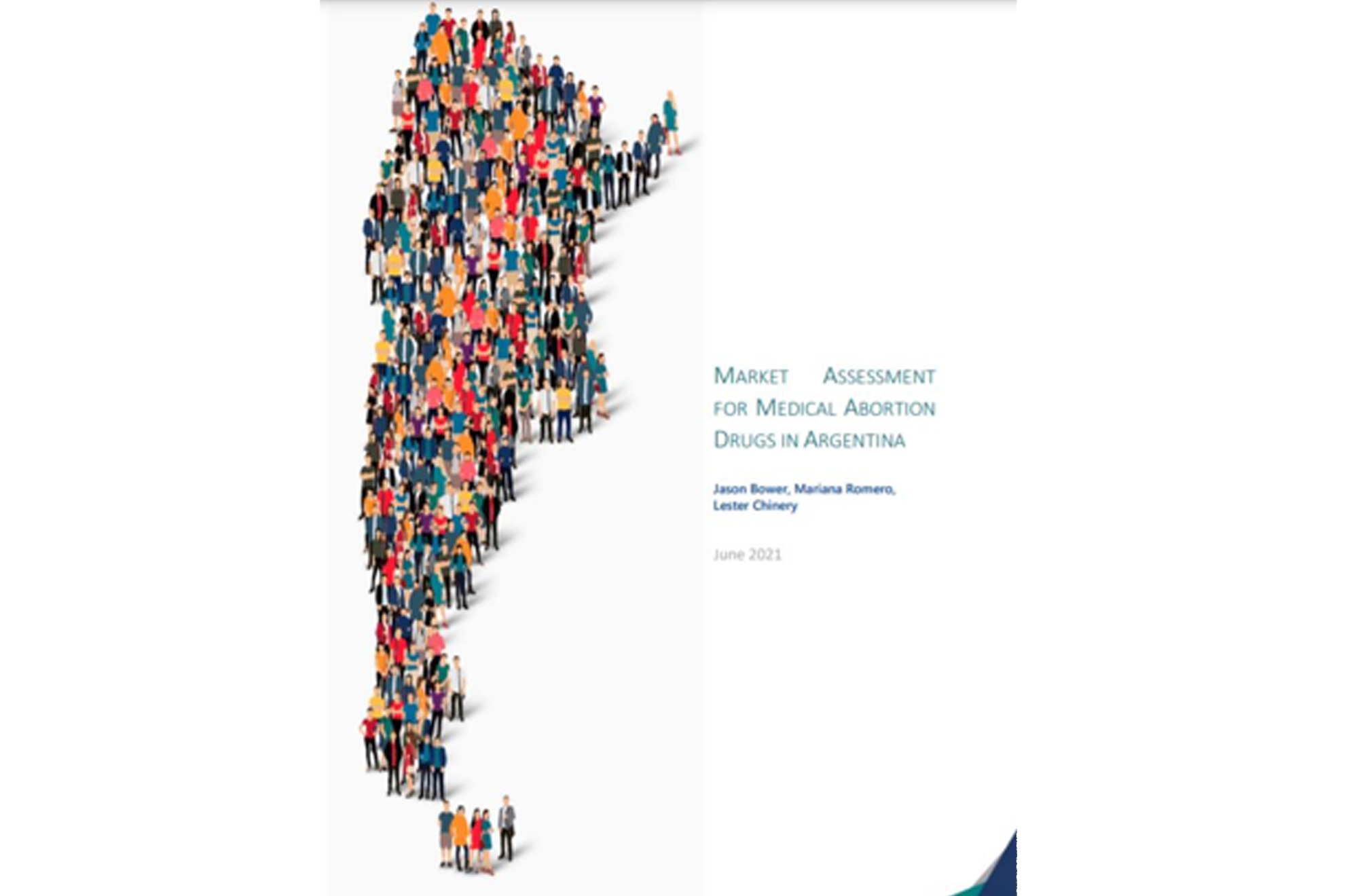
by Jason Bower, Mariana Romero, Lester Chinery, June 2021
Introduction (excerpts)
This 40-page publication was developed by the Concept Foundation and the Centro de Estudios de Estado y Sociedad (CEDES) in Argentina to provide information and guidance for manufacturers and other stakeholders on the Argentinian market for medical abortion drugs. Misoprostol in Argentina was first registered in 2010, though not for induced abortion, while mifepristone has not yet been registered at all – though both have been available to some extent “informally”.
Clinical guidelines have historically preceded drug availability in Argentina. The first guidelines for post abortion care were published by the Ministerio de Salud (Ministry of Health) in 2005. Several guidelines have since been issued, and in 2019, mifepristone was included as part of national comprehensive abortion care guidelines in alignment with WHO recommendations.
Before 2020, medical abortion could theoretically be provided at all levels of public healthcare facilities, including hospitals and primary healthcare centres. In practice, around 700 public health institutions are estimated to currently offer abortion services, with irregular distribution throughout the country’s provincial based healthcare system. The status of abortion services in the private healthcare system is largely unknown, although the single misoprostol product may be widely available in private pharmacies. Training of healthcare providers on comprehensive safe abortion care has been very limited. The new law requires that all public and private facilities in Argentina offer free and comprehensive abortion and post-abortion care, as recommended by WHO. As such, a major clinical and programmatic scale-up is anticipated.
Most abortions in the public health sector are provided by medical abortion, following misoprostol only regimens. For surgical abortion, manual vacuum aspiration is primarily practiced and is only provided at secondary or tertiary level institutions. Medical abortion appears to be preferred over surgical options by both clients and providers. There are additionally, a number of NGO clinics and providers that offer clinical abortion services, and some who support women to self-administer.
The publication provides a market assessment for medical abortion drugs in Argentina, undertaken to assess and understand the forward dynamics for the expansion of availability and access to medical abortion drugs following landmark law reform. It is also intended to serve as a tool to support manufacturing companies in establishing the business proposition when considering entering the Argentinian market with a mifepristone and misoprostol combination medical abortion product (combipack).
The report covers the following information: health system, reproductive health indicators, abortion policy environment, funding of abortion, provision of abortion care (services, methods, access), cost of safe abortion services, costs of unsafe abortion, national pharmaceutical industry, abortion products, regulation of medicines, registration of medical abortion medicines, price control, post-marketing surveillance, procurement and distribution, and training in provision of medical abortion, and barriers and enablers.
Conclusions (excerpts)
The following points have been noted in the paper:
• Law 27610 now mandates the provision of free comprehensive abortion care across Argentina, in line with WHO best practice clinical recommendations.
• Whilst two manufacturers are now making misoprostol products available, the addition of mifepristone will significantly increase the efficacy and safety of the medical abortion regimen.
• Whilst the regulatory requirements of medicines in Argentina are publicly available, specific guidance for misoprostol and mifepristone products would assist in accelerating the product development and registration time.
• Accurate forecasting of medical abortion product requirements is complicated by clinical data limitations and under-reporting, and needs will change significantly with the new law and the introduction of mifepristone products.
• Good clinical guidelines are already in place which include mifepristone and are now being updated to reflect the new legal status.
• Familiarity of clinical guidelines amongst healthcare providers appears low.
SOURCE: FULL REPORT, June 2021



